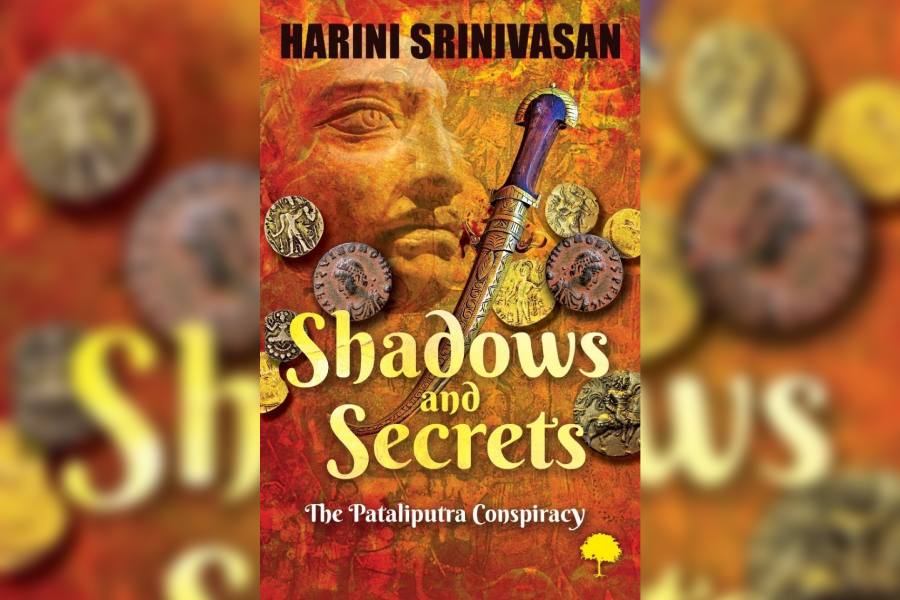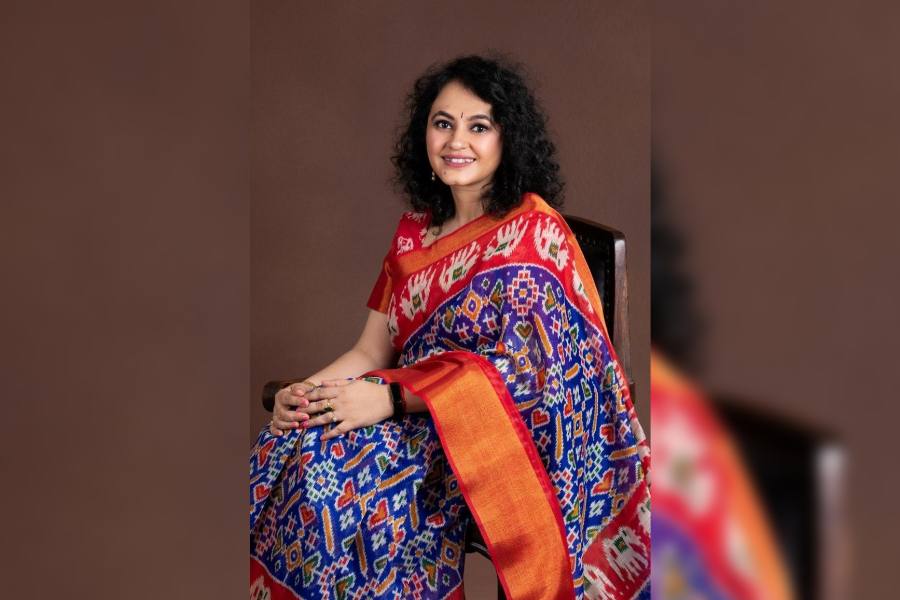For author Harini Srinivasan, history is not just about important dates and names, rather it is about the remarkable lives of a common man. It is this approach to the subject that led her to create the character of Shaunaka in her historical detective mystery series set in ancient India. In the newest instalment, Shadows and Secrets: The Pataliputra Controversy, Shaunaka’s horizon widens as he travels from Nandivardhana to Pataliputra to assist Kalidasa in unfolding the murder mystery. A t2 chat
Q. Setting up a plot for murder and then an investigation in ancient India, the Gupta period and the rule of Maharaja Chandragupta II Vikramaditya must have involved intense research. Tell us about it.
In order to accurately depict any bygone era, one needs to kind of immerse themselves in that period. I read extensively — anything and everything I could find on the Gupta period. My reading list comprised both academic sources like R.C. Majumdar, A.S. Altekar and so on; classic sources like Kalidasa’s plays, Sudraka’s Mricchakatika and present-day literary works that evoke ancient India like S.L. Bhyrappa’s Saartha has been an inspiration and Nandini Sengupta’s Gupta period trilogy. Roshen Alkazi’s book on ancient Indian costumes was another ready reckoner and Vatsyayana’s Kamasutra helped in visualising how people lived back then. Lastly, JSTOR (a digital library) has been a valuable reference whenever I would get stuck.
Q. The world of Shaunaka expands in Shadows and Secrets. What challenges did you face while creating the character of Shaunaka, the young spy, and how does he contribute to the unfolding mystery?
History for me is not that much the story of kings and queens but the daily lives, trials, and tribulations of the common people. Shaunaka was created keeping this in mind. He is a jeweller’s son, who has more ambitions than taking over his father’s business. He is an intelligent, curious young man who wishes to see the world. This was how he had been depicted in The Curse of Anuganga. In Shadows and Secrets, I wanted to expand his worldview and have him travel to Pataliputra and evolve not only as a spy but also as a human being. I have been fascinated by how trade routes and guilds functioned in ancient India and how people travelled as a part of large saarthas/merchant caravans from one place to another. By setting the entire story in Pataliputra, it allowed me to show how Shaunaka travelled from Nandivardhana to Pataliputra in one of the caravans and be there to help assist Kalidasa in unfolding the mystery.
Q. The plot involves murders, conspiracies, and a 100-year-old secret. How did you weave these elements together to maintain suspense and intrigue?

Team Harini Srinivasan
Instead of focussing on a linear murder mystery where there are red herrings and numerous suspects, I focussed on the why behind these murders. The reader gets a hint as to who the antagonist is but what doesn’t become clear till the end is the reason behind these killings. Essentially murders/ conspiracies and secrets are typical plot points/ ingredients of any mystery. What I have tried to do is interestingly integrate them into 5th-century India even as I sketch out the bygone era and its historical details.
Q. What made you choose the Gupta period and Pataliputra for your story?
The Gupta period is the Golden Age of Indian history and hasn’t been explored that much in fiction. I was a part of a writing group and we decided to pick a period and write a short story set in that era. I picked the Gupta period for this writing exercise and this was way back in 2015/2016. The short story metamorphosed into The Curse of Anuganga. Considering that I have spent the past six-eight years researching on this era, it was but natural that Shadows and Secrets also was set in the same historical period. Patalipultra was perhaps the most glorious city back in that time, hence it appeared in my story. What was a trigger for this book was my stumbling upon some not-so-known facets of world history; I was so fascinated by these unknown aspects that I wished to incorporate them in my book.
Q. How did you make sure not to sound academic?
This is where the story along with all its elements — plot twists, conspiracies, characterisation, comes in. For a good historical novel to strike a chord among its readers, it must have a fine balance between history and an engaging story, and I hope that I have managed to achieve that balance in this book.
Q. Transitioning from a civil servant to an author is quite a shift. How did your experiences in the civil service inform your storytelling or writing style?
While my experiences in the civil service haven’t really informed my storytelling or writing style, they have helped me enhance my research skills — something that is much required for writing historical fiction.
Q.What advice do you have for others looking to pursue a career in writing, coming from a different professional background?
To become a writer, one should read a lot and write consistently and regularly. This is the only advice I have if one wishes to become a writer.
Q.What are you working on next?
I am simultaneously working/conceptualising the plot for my next historical fiction (set in the same time period) and a non-fiction project that has been in the works for long.










